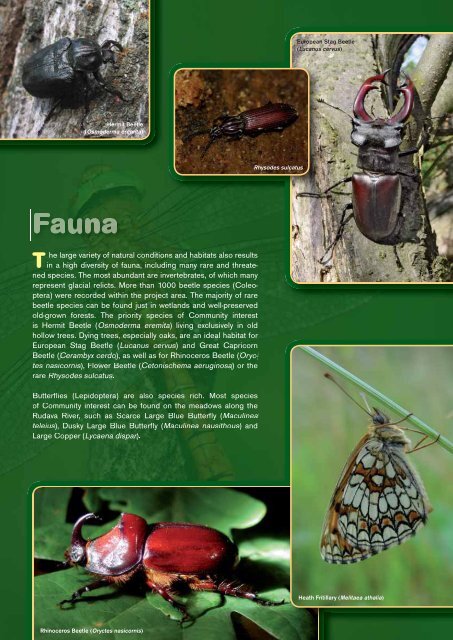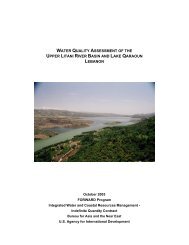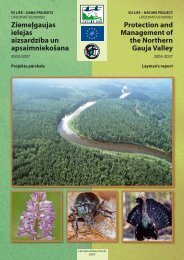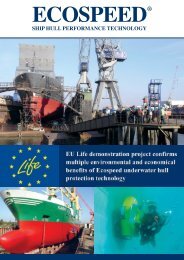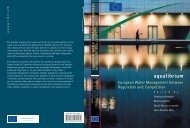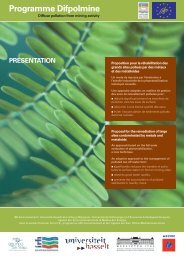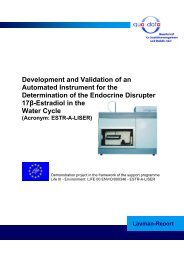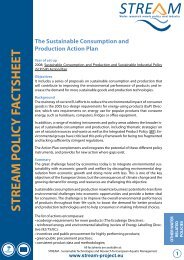RESTORATION OF WETLANDS At - wise-rtd.info
RESTORATION OF WETLANDS At - wise-rtd.info
RESTORATION OF WETLANDS At - wise-rtd.info
You also want an ePaper? Increase the reach of your titles
YUMPU automatically turns print PDFs into web optimized ePapers that Google loves.
European Stag Beetle<br />
(Lucanus cervus)<br />
Hermit Beetle<br />
(Osmoderma eremita)<br />
Rhysodes sulcatus<br />
T<br />
he large variety of natural conditions and habitats also results<br />
in a high diversity of fauna, including many rare and threatened<br />
species. The most abundant are invertebrates, of which many<br />
represent glacial relicts. More than 1000 beetle species (Coleoptera)<br />
were recorded within the project area. The majority of rare<br />
beetle species can be found just in wetlands and well-preserved<br />
old-grown forests. The priority species of Community interest<br />
is Hermit Beetle (Osmoderma eremita) living exclusively in old<br />
hollow trees. Dying trees, especially oaks, are an ideal habitat for<br />
European Stag Beetle (Lucanus cervus) and Great Capricorn<br />
Beetle (Cerambyx cerdo), as well as for Rhinoceros Beetle (Oryctes<br />
nasicornis), Flower Beetle (Cetonischema aeruginosa) or the<br />
rare Rhysodes sulcatus.<br />
Butterflies (Lepidoptera) are also species rich. Most species<br />
of Community interest can be found on the meadows along the<br />
Rudava River, such as Scarce Large Blue Butterfly (Maculinea<br />
teleius), Dusky Large Blue Butterfly (Maculinea nausithous) and<br />
Large Copper (Lycaena dispar).<br />
Heath Fritillary (Melitaea athalia)<br />
Rhinoceros Beetle (Oryctes nasicornis)


